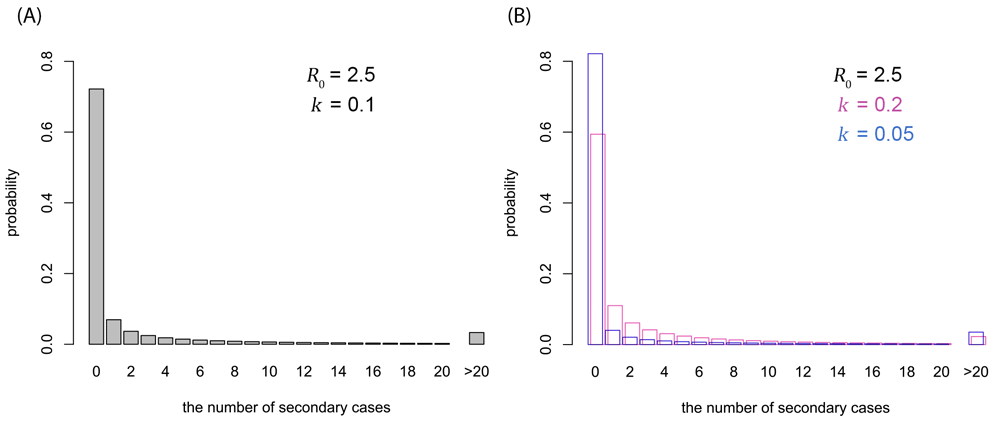You& #39;re a typical American and get COVID tomorrow. Over the next 14 days, how many people are you MOST LIKELY to spread COVID to?
I polled folks on Twitter and got a nice array of responses: 1 or 2, 2 or 3, over 4...
In fact, the correct answer is ZERO. A thread (1/n) https://twitter.com/OmkarGV/status/1304615779846021121">https://twitter.com/OmkarGV/s...
I polled folks on Twitter and got a nice array of responses: 1 or 2, 2 or 3, over 4...
In fact, the correct answer is ZERO. A thread (1/n) https://twitter.com/OmkarGV/status/1304615779846021121">https://twitter.com/OmkarGV/s...
One of the key things to understand with COVID spread is that it& #39;s highly heterogeneous. What does this mean? It means that if each person has a different number called R which describes how many people they spread COVID to, that number varies A LOT between people. (2/n)
How much does it vary? Well in this paper by @_akiraendo and others, they found that 80% of spread come from just 10% of people. You may have heard values for AVERAGE values of R across the population of around 2 or 3. But these averages don& #39;t tell the whole story (3/n)
https://wellcomeopenresearch.org/articles/5-67
So">https://wellcomeopenresearch.org/articles/... if the avg is around 2-3, and 10% account for 80% of that, they must have a really high R, much higher than 3. Likewise, the remaining 90% of ppl account for a much smaller fraction of those 2-3 cases per person. Their R must be less than ONE! (4/n)
So">https://wellcomeopenresearch.org/articles/... if the avg is around 2-3, and 10% account for 80% of that, they must have a really high R, much higher than 3. Likewise, the remaining 90% of ppl account for a much smaller fraction of those 2-3 cases per person. Their R must be less than ONE! (4/n)
What do these graph& #39;s show? Imagine if you took everyone in a population and sorted them by their R number, how many people they spread COVID to. The size of these bars shows how many people spread to 0 people, 1, 2, 3, etc. As you can see the majority of people spread to 0 (5/n)
But some people spread to far more and that& #39;s why the average is higher. Ok, this helps us answer the first poll. The typical American will spread COVID to ZERO other people. This has big implications. It reminds us that we need to avoid large gatherings. Why? (6/n)
Because with just one "superspreader" event you erase the work of dozens of other people who took steps to ensure the transmission chain ends with them. On a societal level, we need to devote WAY more effort to stopping them, because they account for a lot of spread (7/n)
Lastly, I wanted to talk about the second poll: of all the American who will get COVID tomorrow, how many on AVERAGE will they spread COVID to? In other words, what is the current average value of R? Is it still 2-3, which is what the paper above assumed in June? (8/n)
No, cases appear to be declining. This means mathematically, that R must be less than 1. (ty @DiseaseEcology for confirming) This is not cause for complacency however. COVID is still killing 100s per day. & in a heartbeat, R can rise >1 and we return to exponential growth (9/n)
So in conclusion, when folks hear that the vast majority of COVID cases infect 0 new people, they may think GREAT! But actually, nothing about the virus has changed. It has still ravaged through our population. Rather, this stat helps us understand a vital priority: (10/n)
We really, really, really to stop large gatherings in enclosed spaces! (Fin)
I also want to add an addendum to this thread -- there are many large gatherings in which the people involved have little choice but to be there. For example, prisons, nursing homes, essential work. This data underscores the importance of testing, isolation, PPE in these settings

 Read on Twitter
Read on Twitter


